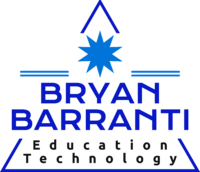After listening to Charlie Watson’s presentation on assistive technology and digital accessibility, I have been reflecting on the ways I design my classroom materials, especially my digital handouts in Google Classroom. Accessibility has always been something I value, but Charlie’s insights made me realize that there is much more I can do to ensure my students can fully engage with the content.
One of the key points he raised was that there are two motivations for accessibility. The first is a selfless one, the belief that our systems should accept people rather than expecting people to conform to rigid systems. The second is a selfish one, the reality that ability is temporary. At some point, we will all experience an accessibility need, whether due to aging, injury, or other circumstances. This perspective struck a chord with me, especially as I have been struggling with some hearing difficulties myself. I have come to appreciate the availability of transcripts alongside videos, as they allow me to read along while listening. It is a simple addition that makes a significant difference.
Charlie also discussed the major categories of assistive technology, which include mobility aids like prosthetics and wheelchairs, hearing aids and cochlear implants, vision tools such as screen readers and braille displays, reading and writing supports like text to speech and alternative keyboards, and speech generating devices. These technologies help students overcome barriers, but they also require that digital content be designed with accessibility in mind.
A key framework he introduced was POUR, which stands for perceivable, operable, understandable, and robust. These four principles serve as a guide for making content accessible to all students, including those who rely on assistive technology. Thinking about my own digital resources, I realize there are areas where I can improve.
Perceivability is about ensuring that all students can perceive the content in a way that works for them. I need to be more intentional about adding alternative text for images, graphs, and tables, ensuring proper formatting for headings and tables, and including captions and transcripts for audio and video. I also need to make sure that key features in diagrams are prominent so that they are easy to interpret.
Operability ensures that students can interact with my content in multiple ways. For example, I need to consider keyboard navigation, making sure students who cannot use a mouse can still access materials. Buttons and interactive elements should be large and easy to click so they work for all students, including those using mobility aids.
Understandability is something I have always valued, but I can do more. Maintaining a consistent reading level, providing summaries for longer content, and using a clear and predictable format will help students process information more effectively. This is especially important for English language learners and students with cognitive processing challenges.
Robustness means ensuring that content works well across different devices and assistive technologies. I want to make sure that students can revisit content, replay explanations, and use tools that support their individual needs. Google Classroom provides options to reattempt quizzes and revisit past lessons, and I want to ensure that these features are available to all students.
After reflecting on all of this, I realize that accessibility is not just about meeting requirements, it is about creating an inclusive learning environment where all students can thrive. I have already made some adjustments to my materials, and I plan to continue improving how I design my digital resources. Accessibility benefits everyone, and the effort to make content more inclusive is always worthwhile.
